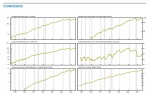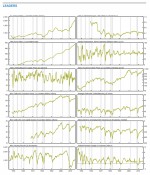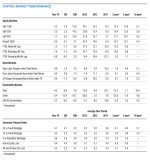Pulling It All Together/Appendix
…Inflation…
Our inflationary pressures scorecard suggests that price pressures are moderating and that despite the pick-up in economic activity and tightening in the labor market, consumer price increases are likely to remain tame.
…The Fed…
The Fed is moving closer to policy normalization, likely raising interest rates in mid-2015, the first increase since 2006. Moving the fed funds target off the 0 to 0.25 percent lower bound may cause some volatility in markets initially, but is an important step towards restoring normal functioning in the financial system. The important thing to watch will be the pace and magnitude of future rate increases.
…Washington…
November’s mid-term elections changed the balance of power in the U.S. Congress. With a newly acquired majority, Republicans are likely to reshape the nation’s fiscal priorities. Potential areas of focus are overall spending cuts, tax cuts, defense spending plans, and the medical device tax that was established as part of the Affordable Care Act.
…Borrowing…
Consumer borrowing trends may play an important role in the growth of purchasing power for consumers in 2015. Over the past several years, slow and steady improvements in the labor market have helped Americans reduce their overall debt burdens and increase their savings. If job creation and wage gains continue in 2015, Americans may feel more confident about taking on new debt, which will increase purchasing power and boost spending.
…Investing
The outlook for fixed income markets in 2015 is not as much about whether rates will rise but when and by how much. The key things to watch will be the timing and pacing of Fed moves, as well as economic growth and inflation rates.
Most commodity prices experienced a major run-up in prices between 2001 and 2011 but have been roughly flat or have fallen since. The key theme for raw materials next year will be the extent to which global economic growth recovers, particularly in China, thereby pushing up demand.
The S&P 500 has tripled to 2,072.83 at the end of November from the low in 2009. Yet, its valuation as measured by the price-to-earnings (P/E) ratio is still roughly equal to the long-run average of about 17. For 2015, we continue to focus on the fundamentals of the U.S. stock market and expect continued improvement in the nation’s economy to support sales and earnings growth, as well as valuations and equity prices.
Global economic growth is expected to accelerate slightly in 2015. As is the case with the U.S., better economic growth should support equity fundamentals internationally. Aside from the economic growth prospects underlying each individual equity market, we will also be watching currency values and commodity prices as each can have a significant impact on equity market performance.




